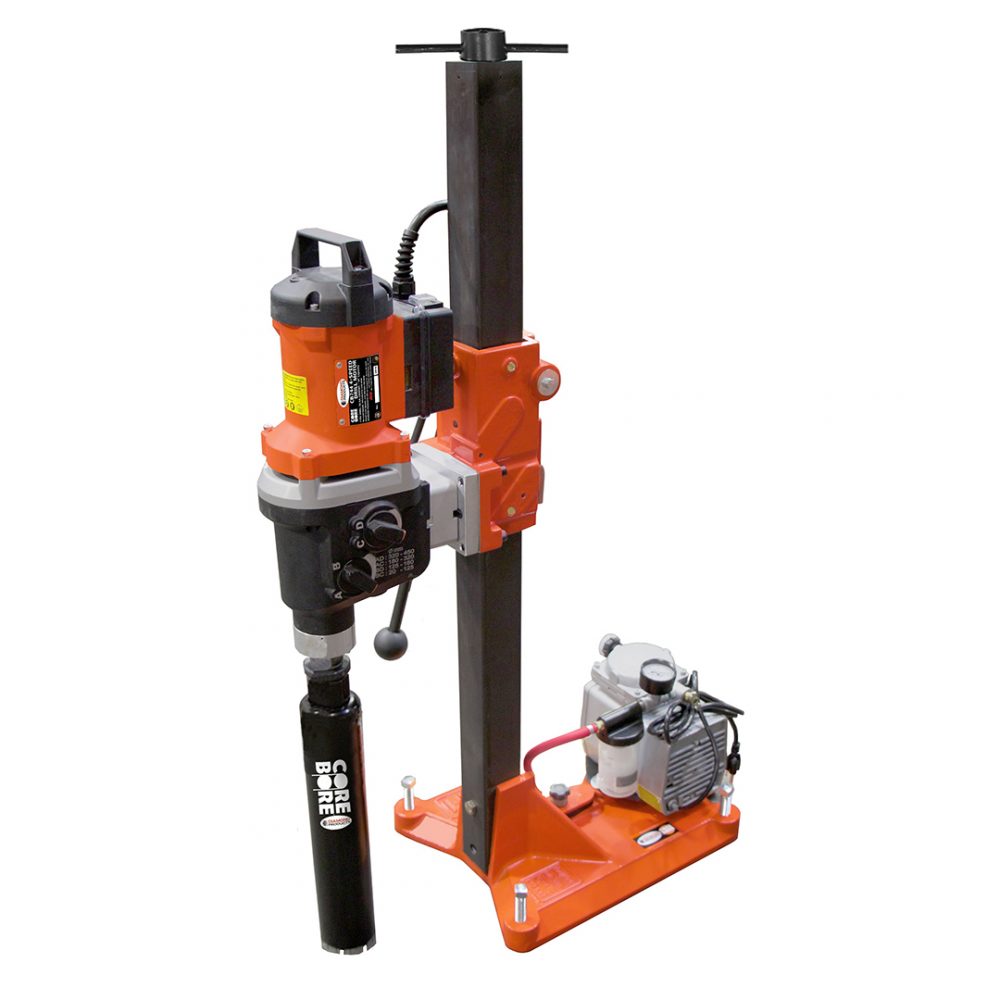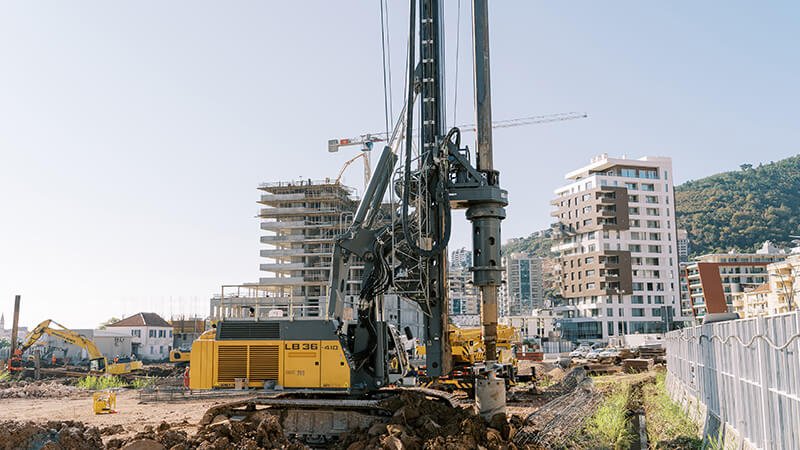How Core Drilling Equipment enhances efficiency on job sites
Wiki Article
Core Drilling Devices: Secret Realities and Insights on Its Role in Resource Exploration
Core drilling equipment is vital in resource exploration, making it possible for the removal of round examples from the Planet's subsurface. This process enables rock hounds to analyze natural resource and understand geological formations. Different techniques and modern technologies enhance effectiveness and safety in boring operations. Nonetheless, the performance of core drilling can be affected by multiple aspects. Recognizing these components is crucial for optimizing source management and reducing ecological influences. What details improvements and considerations shape this considerable field?Overview of Core Exploration Tools
Core exploration equipment is necessary for obtaining round examples from the Planet's subsurface, facilitating geological expedition and source assessment. This customized devices typically consists of a drill rig, core barrel, and different drill bits developed for various geological problems. The drill rig offers the required power and assistance, enabling deep penetration into the earth. The core barrel catches the drawn out product, ensuring minimal disruption to the sample, which is essential for precise evaluation. Drill bits vary in design and product, typically featuring ruby or tungsten carbide to enhance resilience and cutting effectiveness.Furthermore, core exploration devices might include auxiliary elements such as water pumps for air conditioning and lubrication, as well as tasting tools for dealing with and collecting core samples. With each other, these components make it possible for rock hounds and designers to gather crucial data relating to natural resource, groundwater resources, and other subsurface characteristics, eventually educating exploration and extraction methods.
Sorts Of Core Drilling Approaches
While numerous core exploration methods exist to satisfy certain geological and job requirements, each method provides distinctive advantages and applications. The most common techniques consist of ruby core exploration, which utilizes diamond-impregnated little bits for efficient puncturing hard rock, making it excellent for mineral exploration. On the other hand, wireline coring permits the rapid retrieval of core samples, decreasing disruption and guaranteeing high-quality data collection. Reverse flow exploration is chosen for its rate and performance in soft developments, as it brings cuttings to the surface quickly. Furthermore, air core exploration is often used for superficial, unconsolidated materials, supplying an affordable service for initial analyses. Each method has special functional demands and is selected based upon variables such as depth, rock type, and project objectives. Understanding these differed strategies allows geologists and designers to choose the most ideal technique for their certain exploration demands.Technical Improvements in Core Drilling
Current technical innovations in core drilling have greatly changed the market, especially via the introduction of automated core tasting techniques. These innovations boost performance and precision, allowing for more reliable information collection. In addition, boosted drill little bit layouts have improved penetration rates and toughness, additional maximizing core drilling operations.
Automated Core Tasting Techniques
As advancements in technology proceed to improve various sectors, automated core sampling techniques have arised as a game-changer in core boring approaches. These developments simplify the tasting process by minimizing human intervention and boosting accuracy in data collection. Automated systems utilize innovative robotics and sensors to ensure accurate core extraction and analysis, reducing the danger of contamination and human error. In enhancement, real-time information purchase permits instant evaluation of core samples, assisting in quicker decision-making in source exploration. The assimilation of automation not just increases efficiency however likewise significantly enhances safety and security by reducing the requirement for workers in unsafe settings. In general, automated core sampling methods are reinventing just how rock hounds and engineers approach subsurface analysis, causing more educated exploration strategies.Improved Drill Bit Styles
Enhanced drill little bit layouts have actually considerably changed core boring procedures by incorporating advanced materials and innovative geometries that optimize efficiency and resilience. Recent developments include making use of polycrystalline diamond compact (PDC) little bits, which use remarkable firmness and put on resistance, allowing deeper infiltration prices and extended life. Furthermore, improved cooling and lubrication systems have actually been incorporated to reduce friction and warm generation, thereby boosting performance. Designs including specialized cutting structures enable far better rock fragmentation and core recovery, reducing the risk of damage to important samples. The unification of sensing units and wise technologies additionally help in real-time monitoring and performance analysis, guaranteeing that drilling procedures are not just reliable but also affordable, marking a substantial evolution in core boring methodologies.Applications of Core Drilling in Resource Expedition
Core exploration plays an essential role in resource expedition by facilitating mineral source analysis, which is necessary for determining and measuring useful deposits. It boosts geological research by offering crucial information that informs numerous clinical research studies. Furthermore, core drilling is critical in environmental effect studies, enabling a far better understanding of the potential impacts of source removal on ecosystems.Mineral Resource Evaluation
Exactly how can core exploration strategies considerably contribute to mineral source analysis? Core boring plays a crucial duty in precisely figuring out the high quality and quantity of mineral down payments. By extracting round examples from different midsts, rock hounds acquire a straight depiction of subsurface materials. This permits specific examination of mineral structure, composition, and grade, which is crucial for notified decision-making in source growth. Furthermore, core drilling promotes the recognition of geological features and abnormalities, boosting understanding of mineralization procedures. The data acquired with this technique is necessary for source estimation and plays a considerable role in economic usefulness research studies. Eventually, core drilling is a vital device for advancing mineral resource evaluations in exploration projects.Geological Study Innovation
Advancing geological study, core boring strategies provide essential understandings right into subsurface formations and mineral resources. By removing cylindrical examples from the Planet's crust, geologists can analyze the physical, chemical, and mineralogical homes of numerous strata. This information is crucial for understanding geological background, determining potential resource down payments, and assessing the stability of extraction procedures. Core examples disclose info regarding rock kinds, structural geology, and fluid activity, which are critical in developing exact geological models. In addition, improvements in core boring innovation, such as enhanced exploration fluids and bit designs, enhance the precision and performance of sample collection. Generally, the integration of core exploration right into geological study greatly adds to notified decision-making in source exploration and monitoring.Ecological Effect Research Studies
While reviewing this page the environmental influence of resource exploration, core exploration acts as a vital device for gathering information that informs lasting practices (Core Drilling Equipment). This method enables researchers to get subsurface examples, enabling them to examine soil and rock structures, groundwater top quality, and potential contamination. By assessing these examples, environmental scientists can recognize the eco-friendly repercussions of source extraction tasks. Additionally, core boring help in the advancement of reduction approaches to lessen damages to ecosystems. The data collected also sustains regulative conformity, ensuring that exploration activities comply with ecological criteria. Ultimately, core drilling not only improves understanding of geological developments yet also promotes responsible resource administration, balancing expedition needs with environmental managementKey Elements Influencing Core Boring Effectiveness
Core boring effectiveness is greatly affected by several essential variables that establish the success of exploration procedures. One vital variable is the choice of drilling equipment, which affects infiltration prices and core recovery. The design and problem of drill little bits play a critical role, as they need to be suited to the geological conditions encountered. Additionally, the drilling technique employed, such as rotary or ruby exploration, can substantially affect effectiveness.An additional vital factor is the experience of the exploration team. Proficient operators can optimize exploration specifications, decreasing downtime and improving performance. The geological characteristics of the site, consisting of rock hardness and fracturing, also influence drilling rate and effectiveness. Appropriate preparation and job monitoring are necessary in coordinating sources and decreasing hold-ups. Jointly, these variables add to the total effectiveness of core drilling procedures, eventually influencing source expedition outcomes.
Ecological Factors To Consider in Core Boring Workflow
Environmental factors to consider play an essential role in core exploration operations, as they straight influence ecological communities and neighborhood neighborhoods. These operations can disrupt environments, leading to biodiversity loss and dirt disintegration. Making use of heavy equipment may give off greenhouse gases and sound pollution, impacting both wild animals and human populations close by.To mitigate these impacts, operators should stick to stringent ecological guidelines and take on lasting methods. This consists of using environment-friendly exploration liquids, managing waste successfully, and bring back sites post-drilling. Additionally, engaging with local communities can foster transparency and assistance, guaranteeing that boring tasks do not endanger public health or land usage.

Regularly Asked Concerns
What Precaution Are Required When Running Core Drilling Equipment?

read what he said
Exactly How Is Core Example Quality Assessed After Exploration?
Core sample quality is examined with aesthetic evaluation, dimension of physical residential properties, and laboratory evaluation. Aspects like recovery price, core stability, and contamination degrees are assessed to ensure exact depiction of subsurface problems.What Are the Prices Related To Core Drilling Projects?
Costs connected with core boring jobs consist of devices service, labor, transportation, site preparation, and sampling. Furthermore, expenses for environmental permits, site repair, and evaluation add to the overall monetary investment needed for effective boring operations.How Does Weather Condition Affect Core Boring Procedures?
Climate greatly affects core boring operations. Rain, snow, or extreme temperature levels can hinder progression, affect tools efficiency, and develop safety and security dangers - Core Drilling Equipment. Correct preparation and organizing are essential to mitigate weather-related disturbances in drilling tasksWhat Qualifications Are Needed for Core Boring Professionals?
Core drilling specialists usually require certifications such as the National Institute for Qualification in Engineering Technologies (NICET) and OSHA safety training. Extra state-specific licenses may also be needed to determine compliance with regional guidelines and safety and security criteria.
Report this wiki page